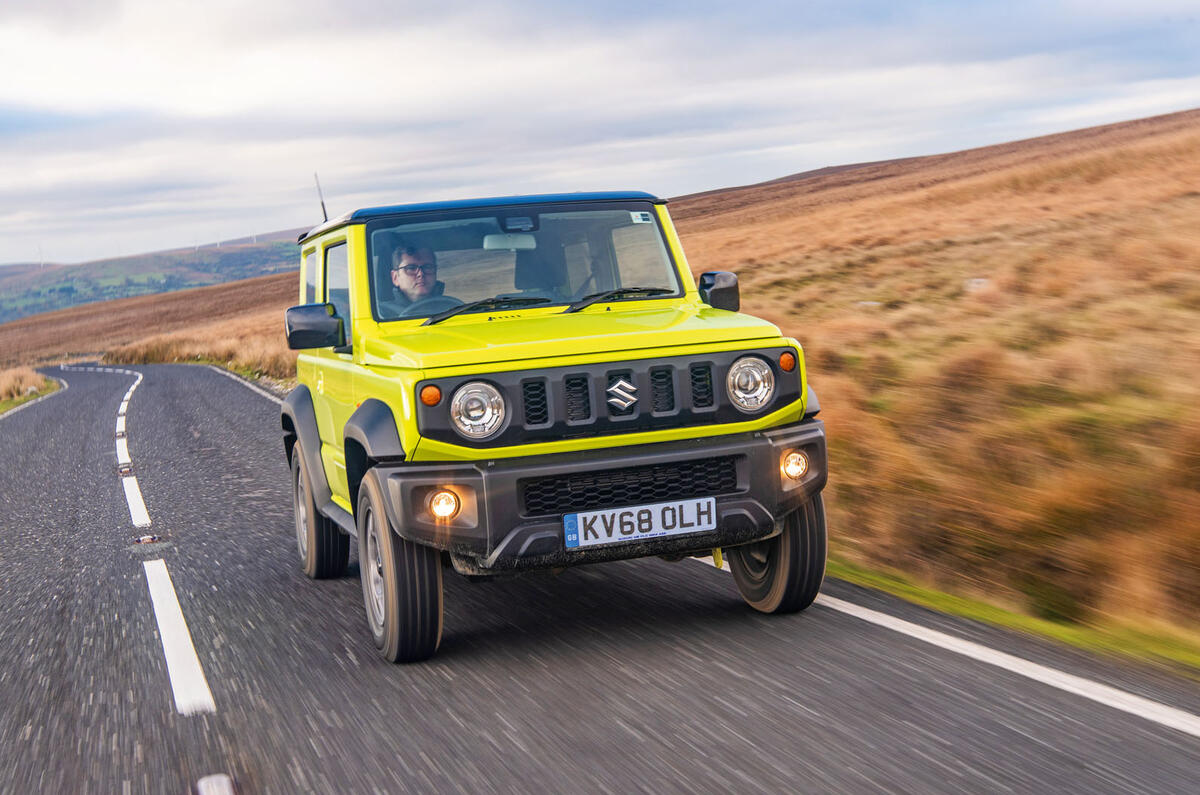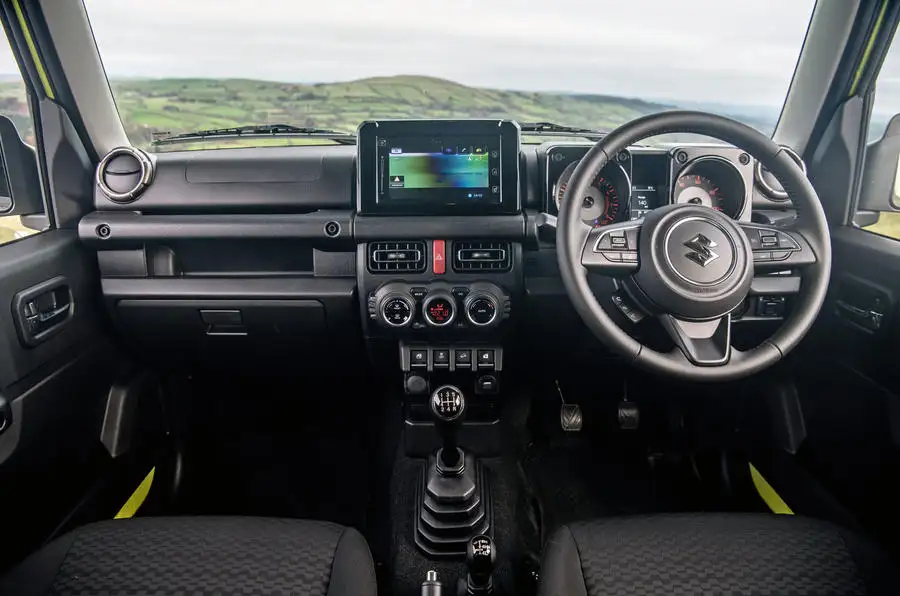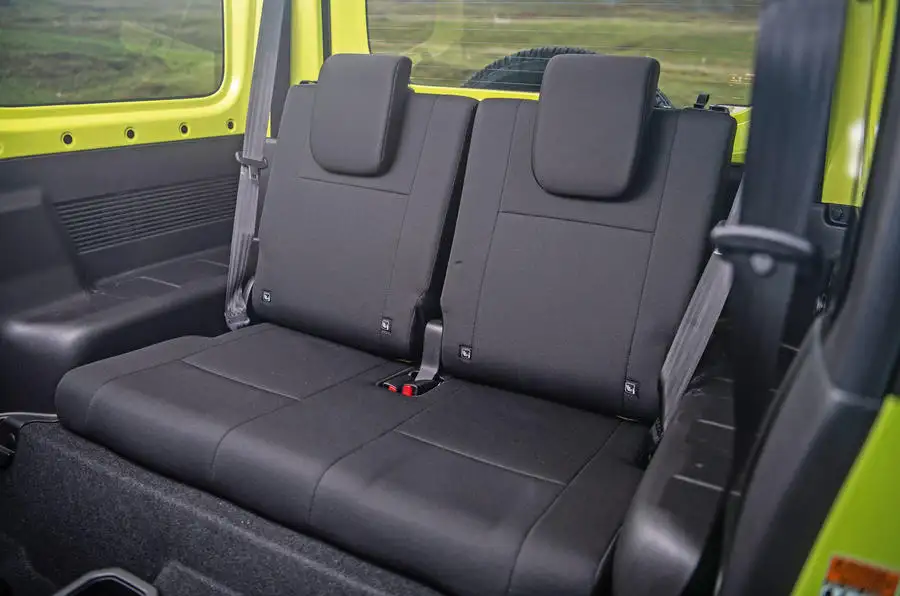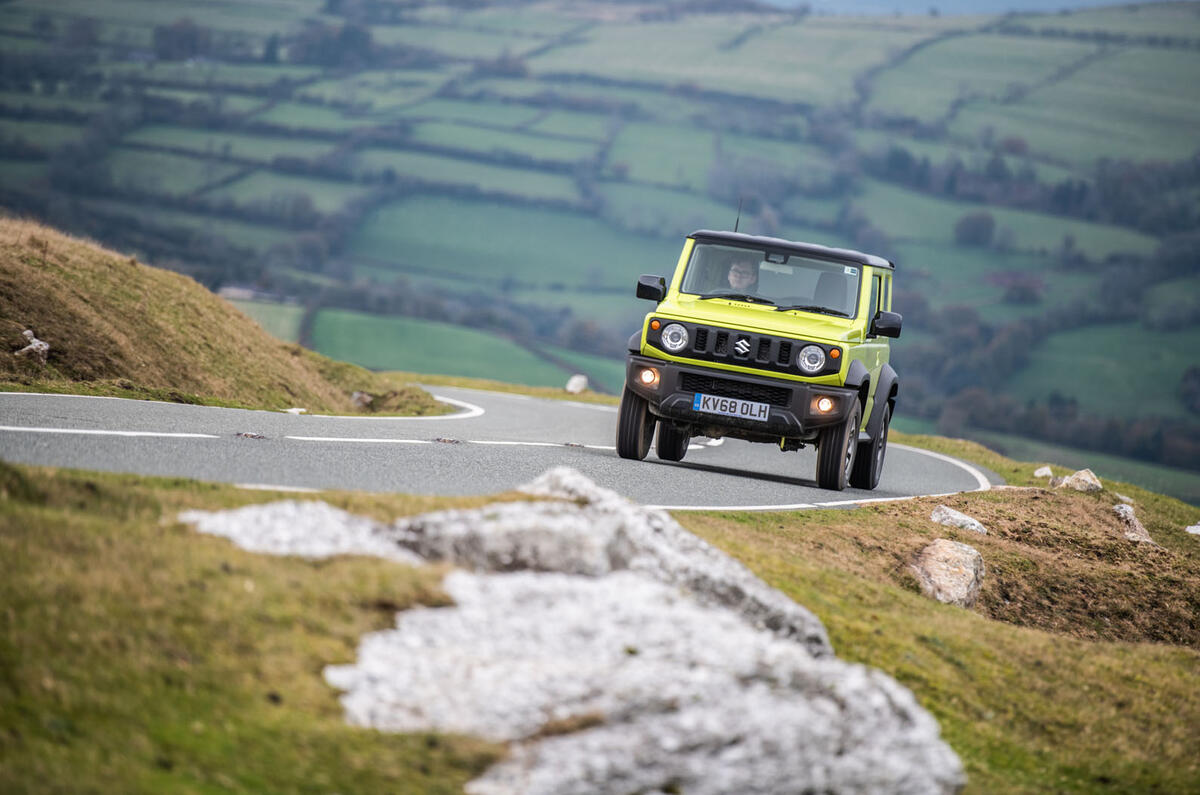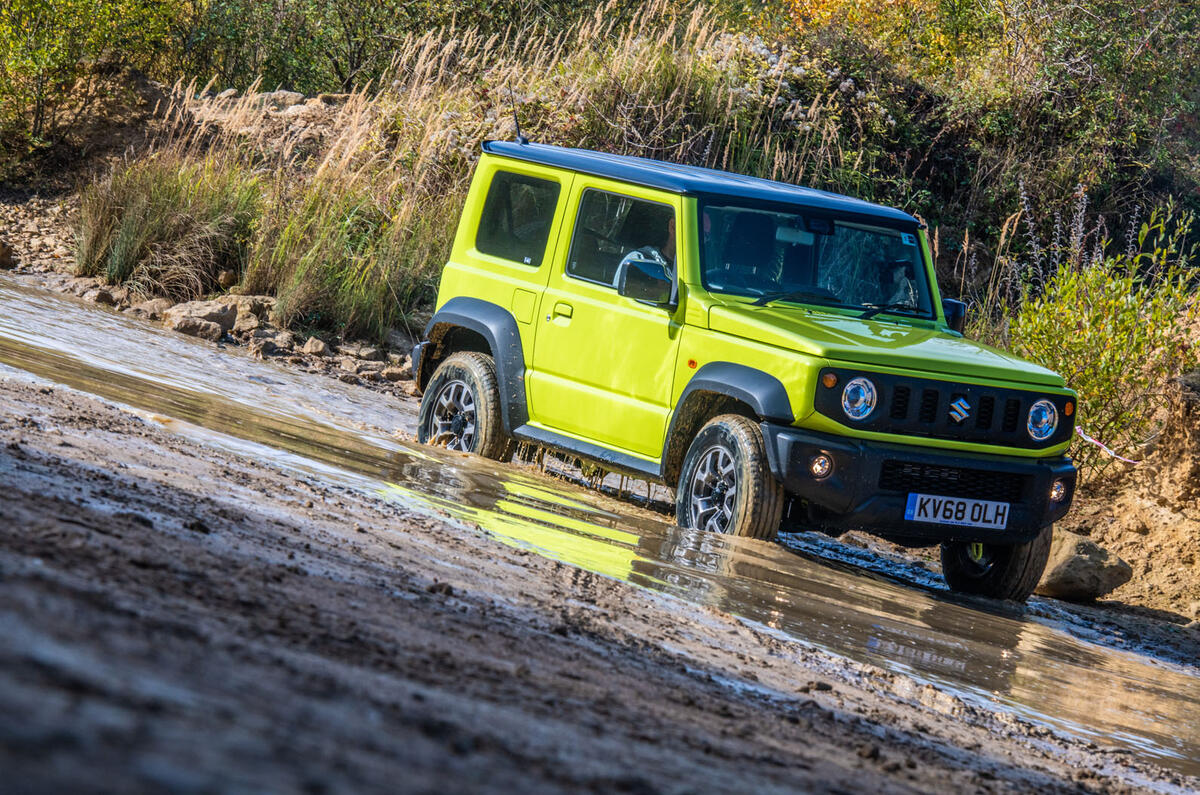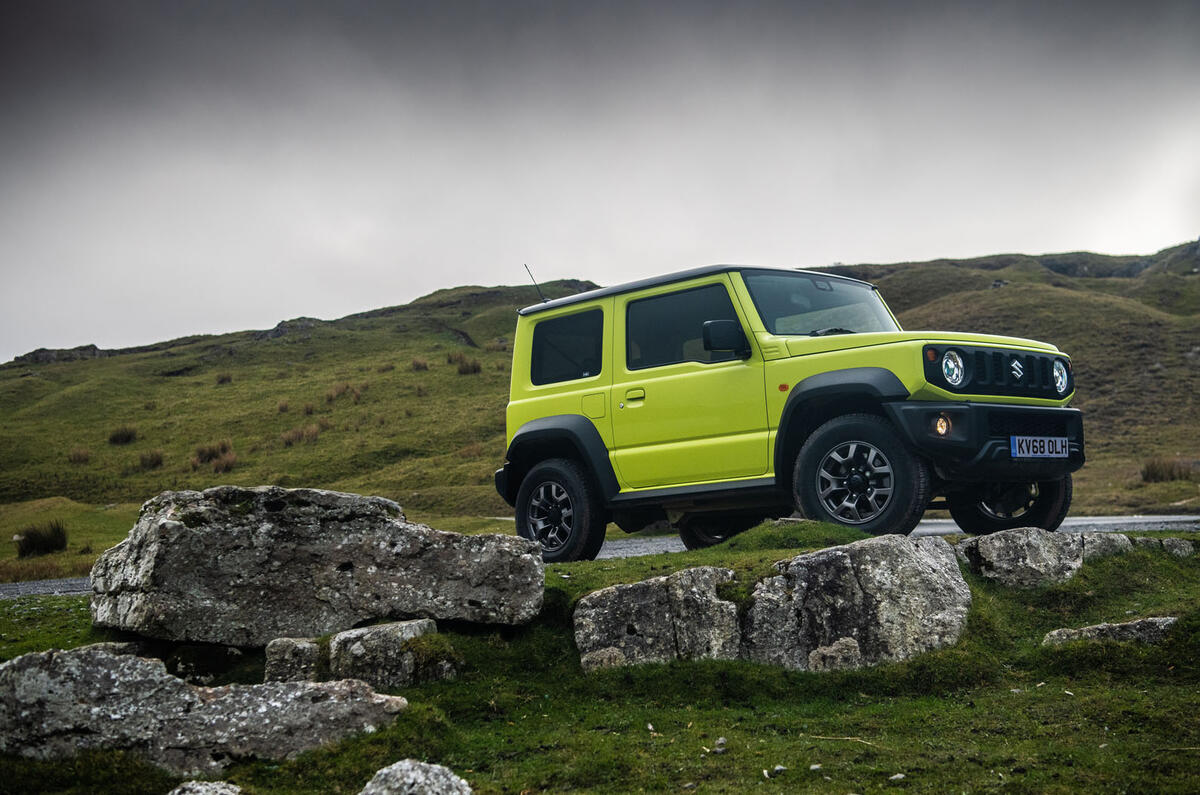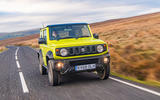Where the Suzuki Jimny’s ladder frame and rigid axle suspension have allowed its predecessors to go further off road than many larger and more sophisticated – not to mention more expensive – SUVs, they’ve been equally responsible for the little Suzuki’s trying on-road manners.
And while this latest model may have arrived some 20 years after the third-generation Jimny first went on sale – and while in some ways it might have sugared the pill, which we’re about to describe – that same trade-off is still alive and well in 2018, much as the car’s disarming looks would make you wish otherwise.
It’s at low speeds where the Jimny’s ride and handling is at its most frustrating, particularly on the craggier stretches of road that are so prevalent here in Britain. Its ride is busy and unsettled, with sharper edges especially capable of sending reasonably forceful jolts into the cabin.
At a brisk open-road trot, the ride settles down a touch and the suspension begins to iron out longwave compressions with a decent sense of pliancy. But there are also times when vertical body movements are so sudden, pronounced and under-damped that it can feel as though the car is about to lift itself clear of the surface of the road – and so it’s best to maintain some awareness of the Jimny’s on-road limitations at all times.



